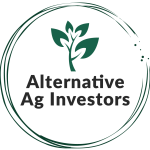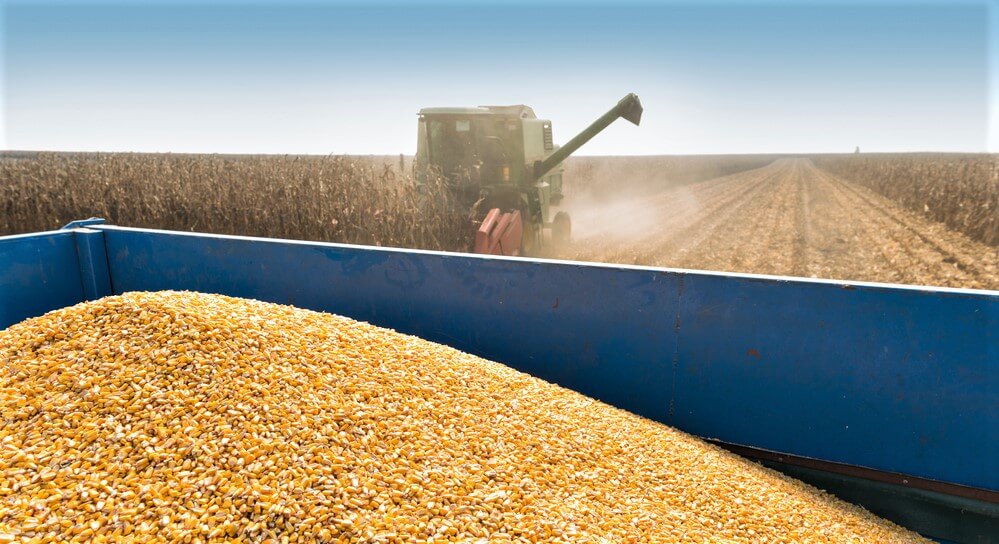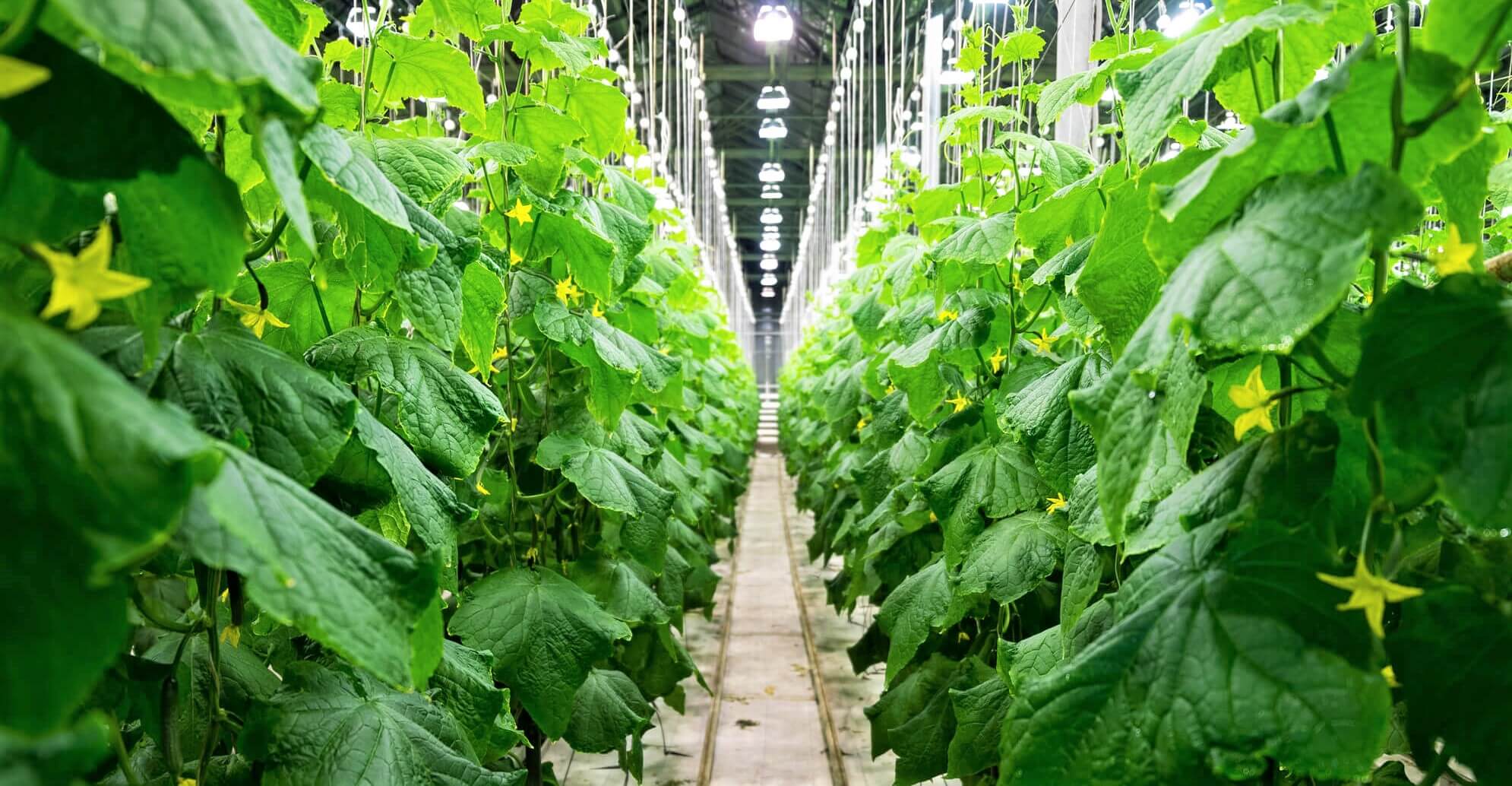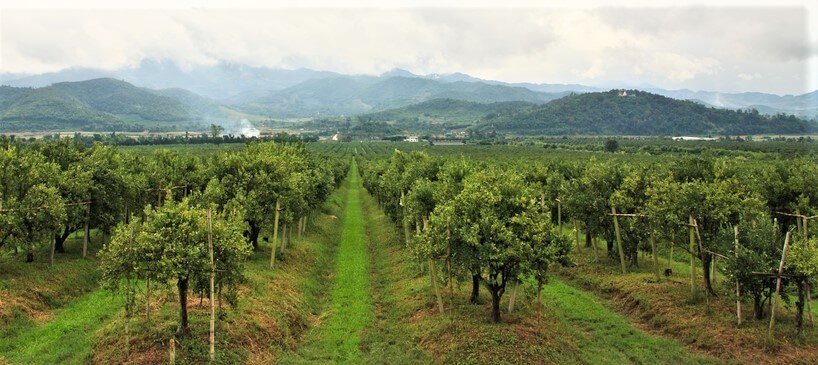Inflation is coming. No, inflation is here… big time. And not just in the United States… it will likely be a lasting …

Alternative Ag Investors Passive Income From Farmland Ownership
Orange Groves
Offer at a glance:
- Location: Distrito Nueva Italia, Paraguay – about 25 miles south of the capital, Asunción
- Price: $18,500 USD (1/4 hectare) or $35,000 (1/2 hectare)
- IRR: 15.46% to 16.14% over 25 years
- ROI: 436% to 467% over 25 years
- Average Net Annual Income: $3,968 to $7,935
- First harvest payment: Following the harvest in year 4
- Duration: Perpetual; replant about every 25 years (the productive life of a typical orange tree)
- Title: Freehold title
- Project size: 400 hectares (1000 acres)
- Minimum purchase: Available in lots of 1/4 hectare (.62 acres) and 1/2 hectare (1.24 acres)
If you’re interested in more details, including the company brochure and full financials, click the link below and learn how this opportunity can be a part of your portfolio.
Paraguayan Oranges: Low Entry Point with A High Return
Paraguay??? Yes, Paraguay!!!
This country of just under 7 million is on the move economically and, according to polling data, is amongst the happiest populations in the world. The Republic of Paraguay has a low public debt relative to GDP and the economy is comparatively strong, undergoing significant diversification and growing (4.5% annual GDP growth over the last 10 years).
The main industry of this land-locked country is agriculture, so what better place to buy managed farmland?
About the size of California, Paraguay is located between Brazil, Argentina and Bolivia. Paraguay offers ideal conditions for growing very high-quality oranges. It is subtropical, with ample rain, year-round sunshine, and the very short winters required to make the fruit sweet. The soil is also ideally suited for citrus crops.
The saplings are ordered from specialist nurseries in Brazil and Argentina and grow about 6 months before they are ready for planting. It takes about 3 years for the saplings to grow and produce their first commercially viable crop.
The company already has one orange plantation with 90,000 trees. This second plantation already has 120,000 trees in the ground with another 150,000 being planted in 2022. The ultimate goal is 300,000 trees, or about 400 hectares (1000 acres).
The plantation is implemented in such a way that different varieties become ready for harvest throughout the year. By growing 8 different varieties, important advantages are created. First, there are no seasonal farmworkers; pickers, processors and packers work year-round. Second, retailers are satisfied with the knowledge that their produce displays will have oranges 12 months of the year.
The fruit is picked as it ripens and detailed records are kept regarding each lot’s harvest. This not only ensures that the owner is properly paid but is also the basis for the pickers’ pay. This data is checked and certified by a leading firm of auditors.
Demand and Marketing
Like many countries in Latin America, Paraguay is land rich yet still imports over 75% of the food it consumes. Oranges are by far the most widely sold fruit in Paraguay and despite the ideal growing conditions between 85 and 97% are imported.
Because your oranges aren’t exported and sold exclusively in-country, the market for your oranges is literally within miles of your land.
With the rapid economic expansion in Paraguay, the additional costs associated with exporting aren’t necessary since the demand for quality products is not only expanding but quickly becoming within the reach of the average Paraguayan.
On top of the positive geography and demographics, the company has opened a string of up-scale produce stores focused on providing high-quality products. Think of it as the difference between Aldi or Safeway vs. Whole Foods; they all offer produce but Whole Foods generally offers a premium product and commands a premium price.
Purchasing additional products from local growers, their goal is to become the retailer of choice, cutting out the wholesaler and typical grocery store from the value chain. If having their own retail stores weren’t enough, the company can nearly assure your oranges will be sold at market value because they also have a controlling interest in one of the largest Paraguayan wholesale fruit and vegetable distributors.
The Crops
Like most crops, the type of orange tree must be carefully chosen for suitability to the climate and soil conditions; you wouldn’t try to grow coconut palm trees in North Dakota or raspberries in the highland desert of Bolivia. In this case, the company has chosen hearty rootstock that grows quickly and thrives in this sector of Paraguay.
Rootstock is chosen for its strength and ability to flourish in a specific environment. The rootstock hosts the scions of the other varieties that are grafted to it. This yields the best combination of sweet, juicy oranges grown on a “chassis” that can withstand everything that Mother Nature can throw at it.
Additionally, 8 different varieties of orange have been carefully selected for their high yields: Valencia, Navel (Ombligo), Ruby, Navel (late), Midnight, Valencia (late), Pera Rio, Folha Murcha, and Hamlin.
By growing multiple varieties, the growing season is expanded (different varieties fruit and ripen at different intervals), typical risks posed to growing oranges are lessened and a more diverse crop expands the ability to market your produce at a top price.
Citrus trees generally have a 25-30-year productive life span. I just had to cut down a red grapefruit tree in my backyard in Florida that was about 32-years old and quit producing. In the case of oranges, the average commercially productive age is about 25 years. After the crop is harvested in year 25, the trees will be cut down and sold as firewood (orange wood is a valued bar-b-que fuel), which adds to the year 25 harvest proceeds. Once the land is cleared, new trees will be planted.
As you can deduce from the above, orange harvest profits grow each year from year 3, reaching a plateau that lasts from years 8 through 20 and then goes down as you get closer to year 25. Once the trees are replanted following year 25, the process starts all over again.
Annual harvest payments for a full ½ hectare lot are projected to be between $4,000 and $11,000 depending on the age of the trees and the point in their lifecycle. This means that you won’t get the same amount each year as you might in, say, a greenhouse project or fruit trees with a much longer lifespan.
The average tree produces 110 to 130 kilograms (240 to 290 pounds) per year when mature, so the harvest from a full lot may easily exceed 45 tons. The company uses very experienced pickers, who are full-time employees and receive a basic wage plus a bonus based on how much they pick.
Risk Factors
Water. Too much water and your trees can get root rot; not enough water the trees dehydrate and either drop their fruit or experience stunted development. The orange plantation is in the southeast part of the country where rainfall is between 55 and 63 inches per year, which is perfect for growing citrus.
Because the plantation is located at a higher altitude, excess rain tends to run off and the rain is supplemented, when necessary, by a highly efficient irrigation system. Add to that the subtropic temperatures, year-round sunshine and excellent soil, and you have a great environment in which to grow your oranges.
The area experiences a brief, mild winter in June and July. While your orange trees can easily survive a month or more in temperatures in the 15° F to 20° F range (-8° C), this area of Paraguay rarely sees temperatures as low as 40° F (5° C).
Pests are always a risk in agriculture so it’s important to know how this risk is mitigated. In addition to spraying the perimeter of the plantation, your oranges are protected by a multi-layer hedge of eucalyptus, neem, and other trees and shrubs that surround the plantation.
Eucalyptus is well known for its insect-repellent properties and use as a fungicide in agriculture but you may not be as familiar with neem. The neem tree comes from India and when its fruit and leaves are blown into the field they are broken down in the soil. The resultant compounds help to “fix” nitrogen in the soil (reducing the need for chemical fertilizers).
More importantly, the oil in the neem seeds and leaves are an extremely helpful bio-pesticide, effective against 600 different insect species and plant diseases including aphids, white flies, nematodes, spider mites, powdery mildew and fungus.
This combination of bushes not only provide natural protection against multiple pests and diseases, but also provides a protective barrier against the wind and cold. You’ve probably seen rows of trees around farm operations where you live. These “windrows” are more than a decorative feature.
The primary disease concern for oranges is the Huanglongbing bacterium, known as HLB. This bacterium, transmitted by flies and mosquitoes, causes the citrus greening disease that has plagued Florida for decades and has now been found in Texas, Arizona and California. The good news for you is that is almost unheard of in Paraguay.
Pay attention to this next point because it’s critical; the primary risks to your trees (fire, pest and crop failure) are covered by insurance and the premiums are included in the operating costs. This is not the normal practice for most agricultural opportunities.
The Environment & Social Responsibility
Planting trees is a sustainable contribution to carbon sequestration as well as creating more habitat for birds, bees and animals. The company has found that using beehives for pollination actually increases the trees’ productivity. Your investment not only provides a healthy financial return, it plays a role in protecting and propagating the bee population, which in turn supports global food security.
With a preference for natural forms of pest control and fertilizing, the farm also utilizes a high-efficiency irrigation method. Using a completely computer-controlled system, your trees are watered every 6 hours with dosing appropriate to the variety and age of tree. The result is stronger trees, increased harvests and significantly reduced water consumption.
Because 100% of the crops are sold locally, distribution of your oranges has a minimal negative impact on the environment.
The Company
With over 25 years of experience in Paraguay, the company is owned and managed by two German brothers who originally started with cattle operations in Paraguay in 1995. Since then, they have branched out into greenhouses, a fruit processing facility, residential real estate, specialty produce stores and citrus groves.
Despite their diversification into non-agricultural projects, the company has and will remain focused primarily on growing, processing and marketing agricultural products. The owners are the biggest investors in the company, which means they have a vested interest in the success of every hectare of land that they manage because, without strong citrus and greenhouse output, they have nothing to sell.
The company has been focused on both consumer (retail sales) and industrial consumption (juicing and IQF – Individually Quick Frozen). But in 2020, as the pandemic raged, they opened small retail stores to market their own produce as well as provide new markets for local farmers growing other products.
In addition to the sorting and packing house they already owned, in 2021 they acquired an established juicing company that they will expand to handle additional capacity.
This is a company focused on innovation and vertical integration.
One of the concerns some have when buying land in Central or South America is the legal system. Because the headquarters of this company are in Munich, the contracts are written under the strict rules of the European Union and regulated by German law.
The Offer
Half lots are 0.62 acres with space for at least 160 trees and each full lot is 1.24 acres with space for at least 320 orange trees. The average tree produces an average of 120 kilograms of fruit, giving a total average harvest of over 40 tons per full lot.
Half lots are $18,500 USD and full lots are $35,000 USD inclusive of transfer taxes and titling costs. The process of re-titling the land into your name or the name of your company typically takes 12-18 months; compared to many Latin American countries this is incredibly fast.
You own the land and trees. Unlike some farm ownership opportunities, the contract specifies that no additional payments are required. Your orange trees will produce annual payments from year 4 through year 25, at which point the trees will be cut down and new trees will be planted.
The company hires a local management firm to plant, maintain and harvest your trees. An auditor verifies both the crop harvest and income for each individual lot (you don’t earn an “average” income based on the whole plantation).
Bear in mind that the timing of your first payment will be impacted by the time of year you made your purchase. Payments are made annually for the prior year’s harvest. Your payment is net operating costs, a 5% management fee and 10% Paraguay taxes. Once the taxes are paid you will receive a tax certificate for your own tax-filing purposes.
The Bottom Line
Your investment in growing oranges is set to yield a strong 436% ROI over 25 years backed by an experienced grower. Marketing costs are minimal based on strong local demand.
Known risks are mitigated by simple yet effective and proven methods.
This opportunity is perfect for people:
- Who understand the value and importance of sustainable farming
- Seeking lower entry point farm ownership opportunities
- Who are forward-thinking investors focused on their long-term financial health
- Building a portfolio that is not correlated to the stock and bond markets
- Looking to create a hedge against inflation while minimizing financial risk
- Seeking off-shore investment opportunities
- Seeking a recurring passive income revenue stream
If you’re interested in more details, including the company brochure and full financials, click the link below and learn how this opportunity can be a part of your portfolio.
BLOG POSTS
Regardless of what you may think about the recent antics involving GameStop and other stocks, you may have noticed that folks who …
If you’ve been thinking about putting some of your money into farming, congratulations – you’re the type of person who thinks outside …
According to the U.S. Department of Agriculture, roughly 15 billion bushels of corn are grown in an average year in the U.S. …
Are your loved ones prepared for uncertain times ahead? Will they have enough financial resources to weather rough times? Do they have …
Are greenhouses the wave of the future for produce farming? Many experts think so and it might be time for you to …
Farmland. It’s a tremendous long-term investment and, like most alternative investments, you can get some idea of its value by who chooses …
You’ve been working hard and looking down the road towards the day you get to stop working. You’ve been socking away money …
You’ve got some investments but you’re worried about the future. You’ve done your research. You know it’s critical that you diversify your …
Although not an exact quote, that line from Samuel Taylor Coleridge’s 1798 poem the Ancient Mariner is becoming increasingly true at a …
Most of my blog posts are topical, but this week I’m writing about my inspection tour of the greenhouse that my wife …
My Fair Lady Mangos Shortly after booking my flight to Panama, I learned that there had been a fire on the …
During my last trip to Panama, I met with the president of an amazing company that produces specialized coffee and cacao. I …
Update: I originally wrote this blog post on May 29. I knew things were bad at that point, but now they are …
Owning managed farmland is a smart investment. Managed farmland consistently increases in value, is a strong inflation hedge, outperforms the stock market, …
My wife and I reprised our Maui honeymoon during the first 10 days of September and had a fabulous time. When we …
In 2008, as the U.S. and the world were facing a dramatic economic downturn, NuWire Investor developed a list of the top …
Sometimes I hate it when I’m right. Unfortunately, my prediction early last year that we would suffer serious inflation in 2022 has …
Over the years, I have been frequently asked what sustainable agriculture is and why it’s important. And last month Jose, a prospective …
Eight billion. According to the United Nations, that’s the estimated milestone population of the Earth as of November 15. The most current …
Amazing! I recently returned from a multi-day tour of the AgroNosotros coffee and cacao farms in western and north Panama and was …





















